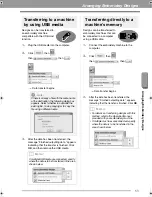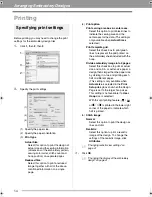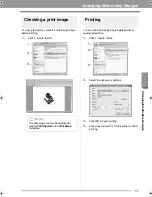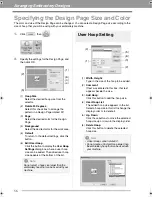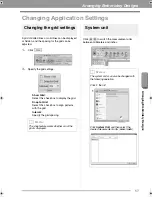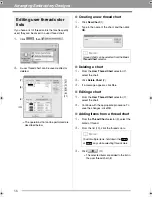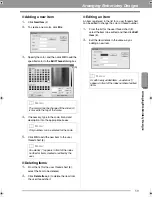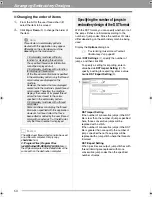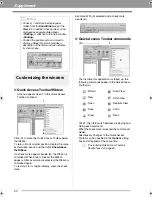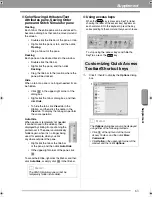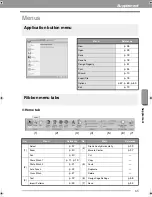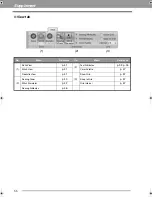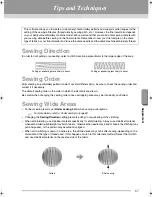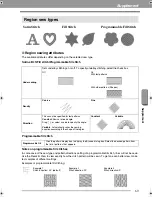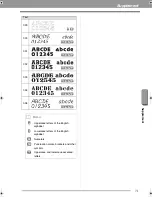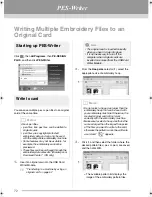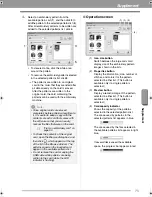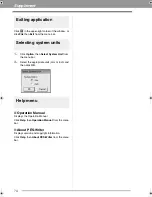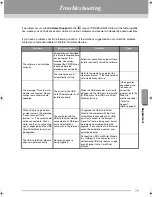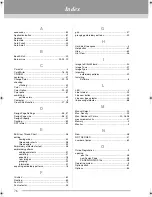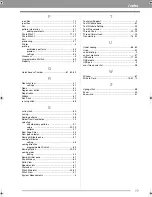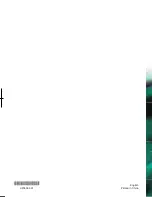
67
Supple
m
e
n
t
Tips and Techniques
Sewing Direction
In order to limit pulling or puckering, select a stitch direction perpendicular to the larger edge of the area.
Sewing Order
After creating an embroidery pattern made of several different parts, be sure to check the sewing order and
correct it if necessary.
The default sewing order is the order in which the elements are drawn.
Be careful when changing the sewing order since overlapping areas may be incorrectly positioned.
Sewing Wide Areas
• For best sewing results, set
Under sewing
to
On
when sewing wide regions.
c
For more details, refer to “Under sewing” on page 69.
• Changing the
Sewing Direction
setting prevents pulling-in or puckering of the stitching.
• When embroidering, use stabilizer material specifically for embroidering. Always use stabilizer material
when embroidering lightweight or stretch fabrics, otherwise the needle may bend or break, the stitching may
pull and pucker, or the pattern may become misaligned.
• When satin stitching is sewn in a wide area, the stitched area may shrink after sewing, depending on the
material and the type of thread used. If this happens, switch to this alternate method: Select the fill stitch
and use stabilizer material on the reverse side of the fabric.
This software allows you to create a wide variety of embroidery patterns and supports wider ranges for the
setting of the sewing attributes (thread density, sewing pitch, etc.). However, the final result also depends
on your particular embroidery machine model. We recommend that you make a trial sewing sample with
your sewing data before sewing on the final material. Remember to sew your trial sample on the same
type of fabric as your final material and to use the same needle and the same machine embroidery thread.
Pulling or puckering more likely to occur
Pulling or puckering less likely to occur
Pattern
After sewing
XE8656-001.book Page 67 Thursday, June 30, 2011 2:56 PM

